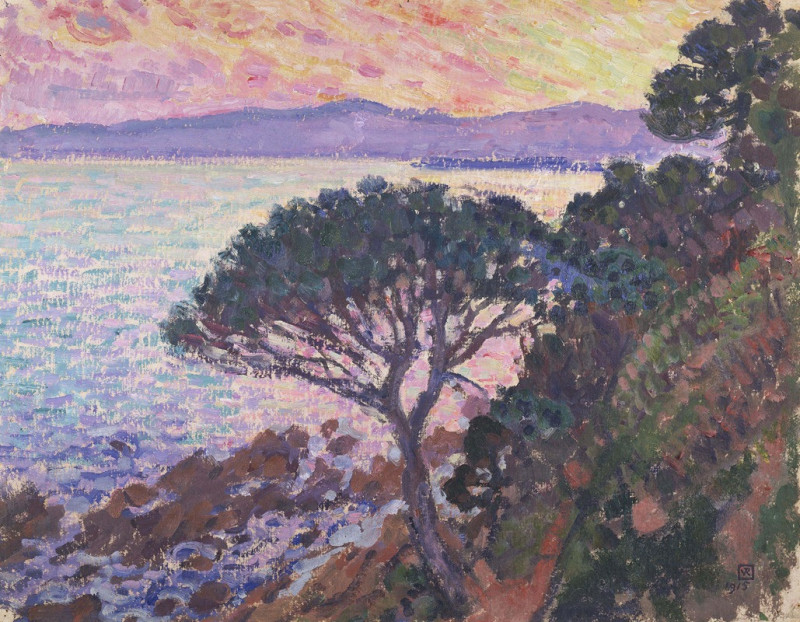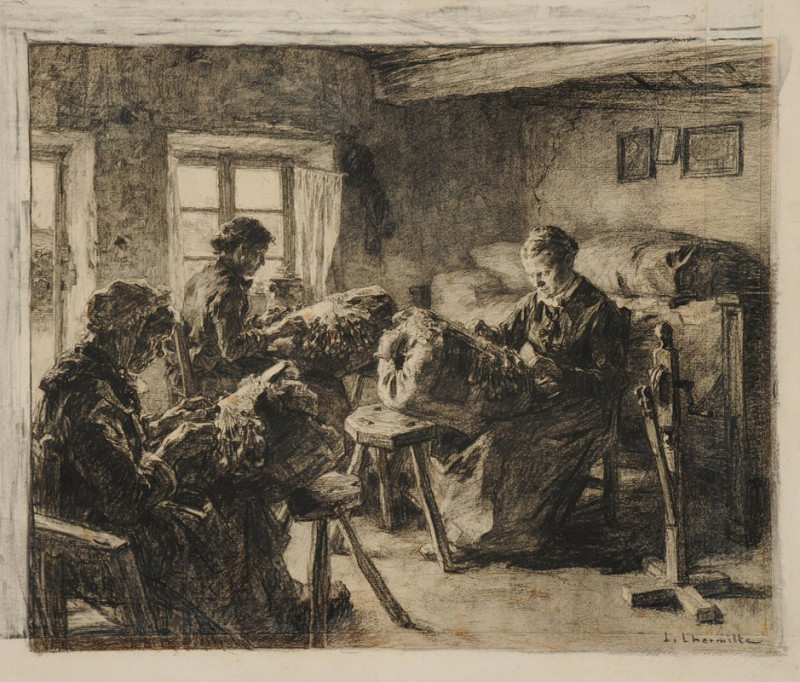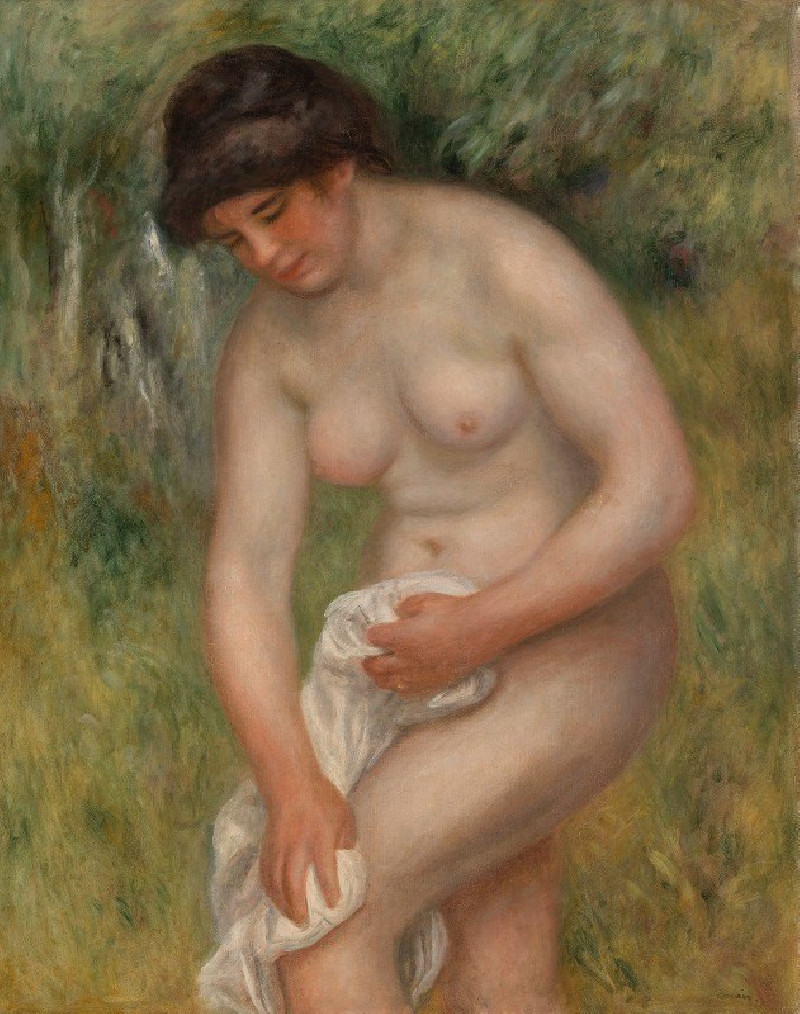Armand Heins Painting Outdoors (1881)
Technique: Giclée quality print
Recommended by our customers
More about this artwork
The painting titled “Armand Heins Painting Outdoors” (1881) by Theo van Rysselberghe captures a serene moment in the midst of a verdant setting. It depicts the artist Armand Heins engrossed in his craft, sketching at an easel amidst a landscape dotted with trees. A large, pale umbrella stands next to him, providing shade, while a curious goat in the foreground adds a touch of liveliness to the scene.Van Rysselberghe uses loose, impressionistic brushstrokes to convey the textures of the grass and leaves, lending a somewhat informal but dynamic feel to the canvas. The artist is shown in profile, allowing the viewer to focus on his concentrated expression and the precise movement of his hand.This composition not only reflects the beauty of the natural environment but also the dedication of an artist at work in his preferred setting. The tranquil scene is a testament to the early plein air practice among artists, showcasing their desire to capture the immediacy of the world around them.
Delivery
Returns
Théophile "Théo" van Rysselberghe was a Belgian neo-impressionist painter, who played a pivotal role in the European art scene at the turn of the twentieth century.
Born in Ghent to a French-speaking bourgeois family, he studied first at the Academy of Ghent under Theo Canneel and from 1879 at the Académie Royale des Beaux-Arts in Brussels under the directorship of Jean-François Portaels.














































